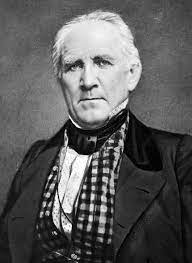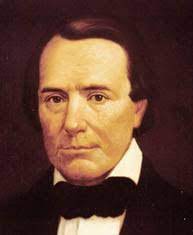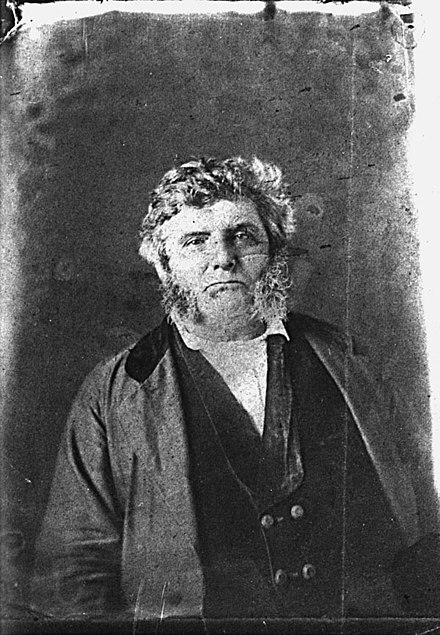The Republic of Texas holds a unique place in American history as a short-lived independent nation. In this special four-part blog post series, I will be diving into the intriguing world of the presidents of the Republic of Texas, shedding light on their leadership styles, political tensions, and the challenges they faced. This blog post focuses on one of the lesser-known presidents, Anson Jones, the final President of the Republic of Texas.
Anson Jones played a crucial role in annexing Texas to the United States. Despite facing opposition, Jones was determined to maintain stability in the republic and ensure its successful integration into the American system. His presidency coincided with significant immigration to Texas, with people from Germany, Alsace, and the Deep South bringing diverse perspectives and ideas that challenged existing norms.
Education has always been a priority in Texas, with the belief that an educated population is vital for the republic’s success. While state control over public education took time, universities were set up, and the Texas Education Agency became fully invested in shaping education delivery by 1949.
Jones’s dedication to continuing Sam Houston’s work in promoting the annexation of Texas was a defining characteristic of his presidency. Despite facing opposition and conspiracy theories surrounding Houston’s departure from politics, Jones kept his hand on the tiller and steered the republic towards annexation. His persistence and dedication to the cause were instrumental in Texas officially becoming part of the United States in January 1846.
Different ideas of what Texas ought to be were the driving forces behind its annexation. Some believed in embracing the American vision and becoming part of the American machine, while others saw Texas as an opportunity to establish their own unique identity. The presidents of the Republic of Texas, including Jones, expressed their understanding of the American experience and put different emphases on their visions for Texas.
Education played a significant role in shaping the future of Texas. Mirabeau B. Lamar, a previous president, laid the foundations for the state’s school system, and Jones himself endowed a university. The emphasis on education stems from the belief that knowledge is power and that an educated population is better equipped to uphold the principles of the republic. However, implementing a comprehensive education system proved challenging.
It wasn’t until the mid-20th century that Texas saw significant progress in state control over public education. Universities such as the University of Texas and Texas A&M were established, and the Texas Education Agency took on the responsibility of shaping education delivery across the state. However, even then, there were still areas where access to education remained limited, particularly in rural areas.
Anson Jones served as the fourth and final President of the Republic of Texas from 1844 to 1846. His leadership during this period provided several valuable leadership lessons.
- Diplomacy and Negotiation: Jones was a skilled diplomat who worked to secure the annexation of Texas by the United States. His diplomatic efforts highlight the importance of negotiation and building strong relationships to achieve political goals.
- Persistence and Patience: Jones faced numerous challenges and setbacks in his pursuit of annexation, but he remained persistent in his efforts. Compliance leaders should be patient and willing to persevere despite obstacles and setbacks.
- Adaptation to Changing Circumstances: As the political landscape evolved with the U.S. presidential election of 1844, Jones adapted to the changing circumstances to align Texas with the interests of the United States. Effective compliance leaders should be flexible and able to adjust their strategies as situations and corporate risks change.
- Strategic Timing: Jones carefully timed the submission of Texas’s annexation request to the United States, aligning it with favorable political conditions. Timing is critical in leadership, and compliance leaders should be strategic in choosing when to act on important initiatives.
- Vision and Advocacy: Jones strongly advocated for Texas annexation and had a clear vision for its future as part of the United States. Effective compliance leaders articulate their vision and passionately advocate for their goals to inspire and rally support.
- Collaboration and Alliances: Jones worked closely with influential political figures, including President James K. Polk, to advance Texas’s interests. Building alliances and collaborating with key stakeholders is not simply essential but mandatory for compliance leaders to achieve their objectives.
- Foresight and Planning: Jones’s leadership included careful planning and strategic thinking. CCOs and compliance leaders should anticipate challenges and develop plans to address them effectively.
- Ethical Leadership: Jones upheld ethical principles and maintained a commitment to democratic processes throughout his presidency. Compliance leaders should demonstrate ethical behavior and adhere to their values, even in the face of business pressures to approve unwarranted risks or other nefarious activity.
- Decision-Making Under Pressure: The annexation process placed immense pressure on Jones, but he made critical decisions thoughtfully and with a focus on the best interests of Texas. Compliance leaders must be able to make difficult decisions under pressure.
- Legacy and Transition: Jones played a pivotal role in Texas’s transition from a republic to a state within the United States. Compliance leaders do not often consider their legacy and the impact of their decisions on the future of their organizations, but they should do so.
Anson Jones’s leadership during his term as President of the Republic of Texas offers lessons in diplomacy, persistence, strategic timing, vision, collaboration, foresight, ethical leadership, and decision-making under pressure. His efforts ultimately led to the annexation of Texas by the United States, shaping the state’s history and its place in the Union.
Education development in Texas highlights the importance of execution and the challenges of implementing educational policies. While the presidents of the Republic of Texas laid the foundations and set the cornerstones, it took several decades for education to gain momentum and for state control to be fully established.
In conclusion, Anson Jones’ presidency and the education development in Texas were intertwined with annexing Texas to the United States. Jones played a crucial role in steering the republic toward annexation, and education remained a priority throughout this period. The challenges faced in implementing a comprehensive education system highlight the importance of considering the impact and tradeoffs involved in decision-making. Education continues to be a vital aspect of Texas’ identity and plays a significant role in shaping the state’s future.







